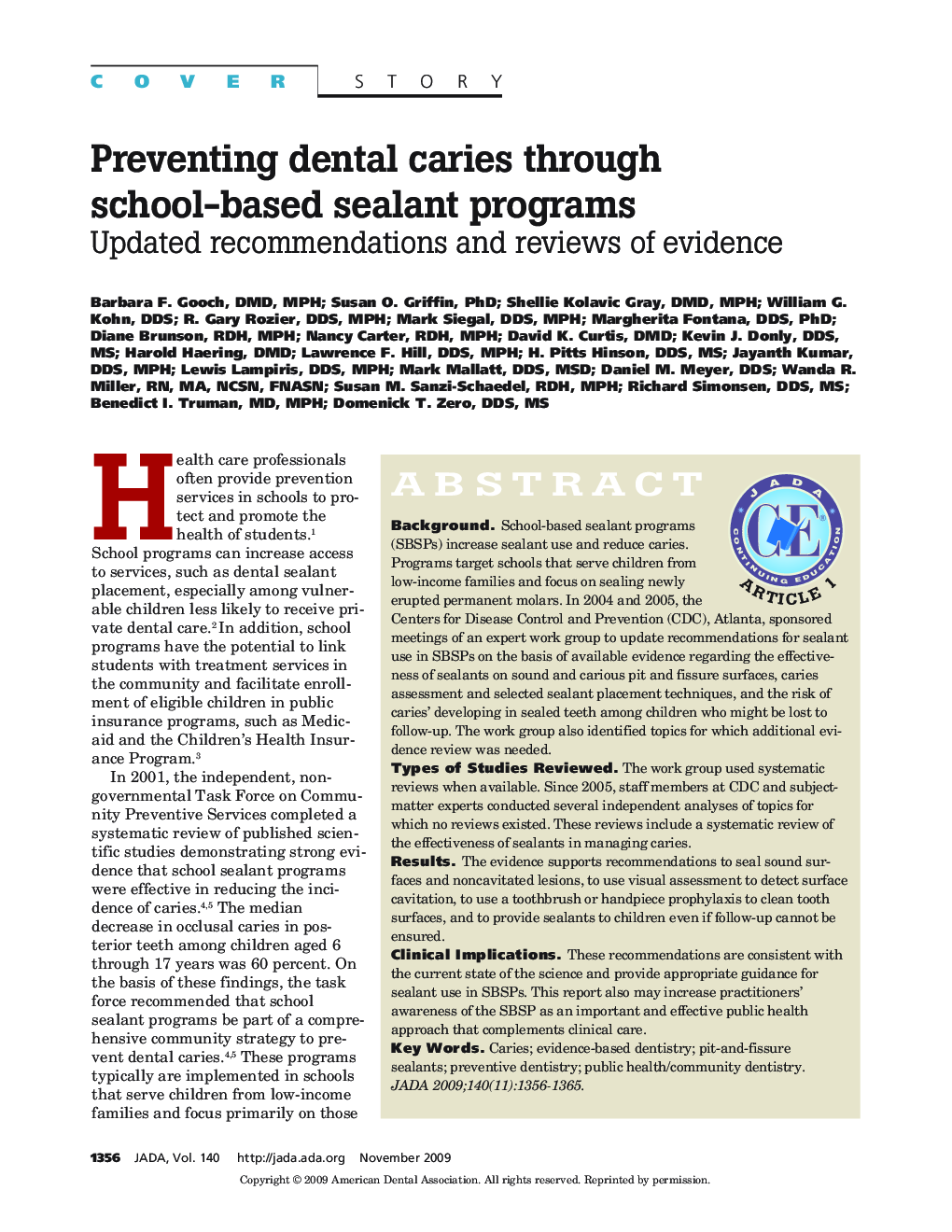| Article ID | Journal | Published Year | Pages | File Type |
|---|---|---|---|---|
| 3139452 | The Journal of the American Dental Association | 2009 | 10 Pages |
ABSTRACT BackgroundSchool-based sealant programs (SBSPs) increase sealant use and reduce caries. Programs target schools that serve children from low-income families and focus on sealing newly erupted permanent molars. In 2004 and 2005, the Centers for Disease Control and Prevention (CDC), Atlanta, sponsored meetings of an expert work group to update recommendations for sealant use in SBSPs on the basis of available evidence regarding the effectiveness of sealants on sound and carious pit and fissure surfaces, caries assessment and selected sealant placement techniques, and the risk of caries' developing in sealed teeth among children who might be lost to follow-up. The work group also identified topics for which additional evidence review was needed.Types of Studies ReviewedThe work group used systematic reviews when available. Since 2005, staff members at CDC and subject-matter experts conducted several independent analyses of topics for which no reviews existed. These reviews include a systematic review of the effectiveness of sealants in managing caries.ResultsThe evidence supports recommendations to seal sound surfaces and noncavitated lesions, to use visual assessment to detect surface cavitation, to use a toothbrush or handpiece prophylaxis to clean tooth surfaces, and to provide sealants to children even if follow-up cannot be ensured.Clinical ImplicationsThese recommendations are consistent with the current state of the science and provide appropriate guidance for sealant use in SBSPs. This report also may increase practitioners' awareness of the SBSP as an important and effective public health approach that complements clinical care.
